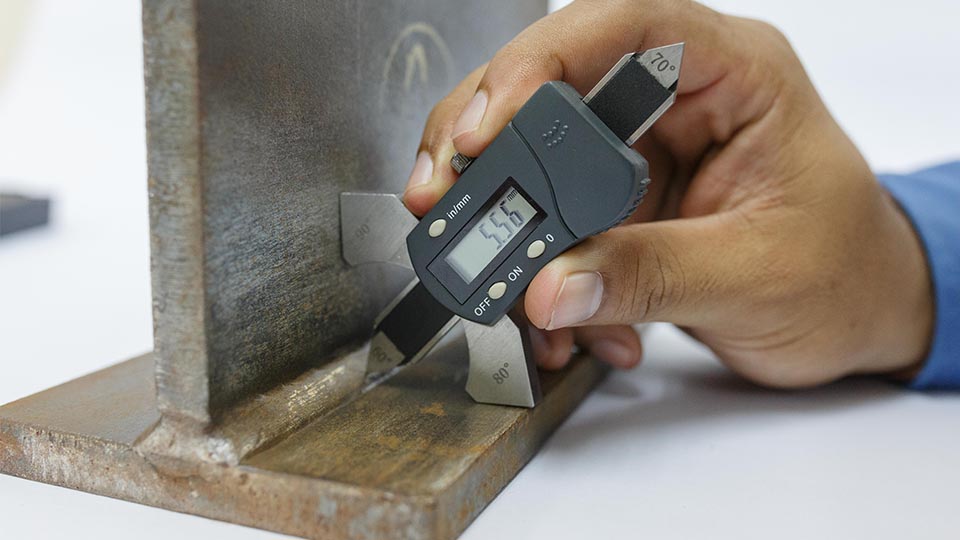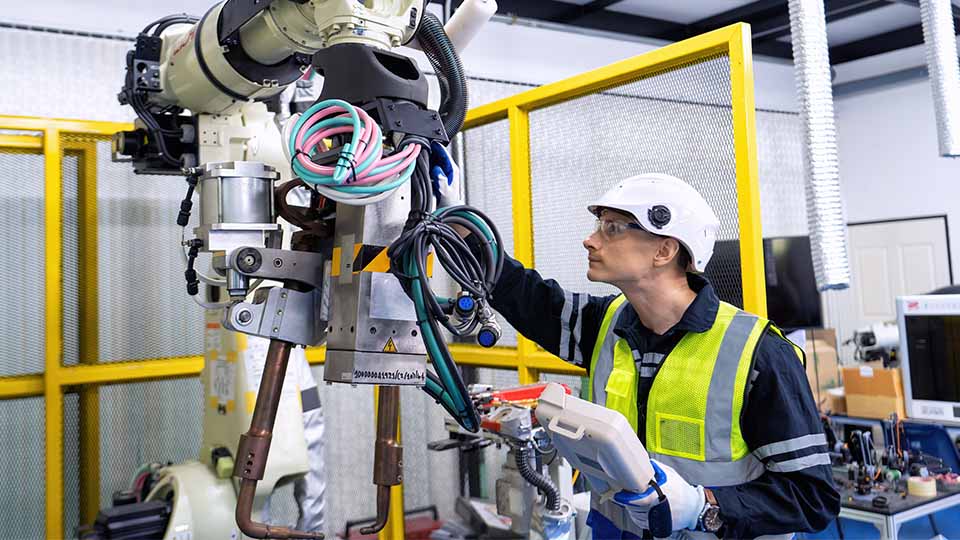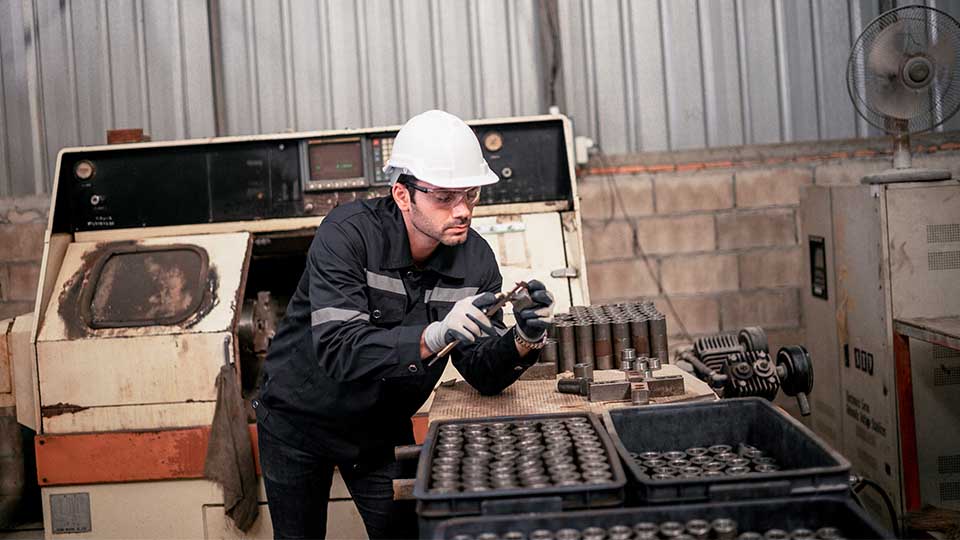A smooth-running manufacturing operation experiences as little downtime as possible. When they do face manufacturing downtime, it’s pre-planned and done to optimize the business further.
That’s the ideal situation. However, downtime can happen at any time and sometimes without warning.
Unplanned downtime can be a huge roadblock to hitting your production targets, and it’s a snowball of issues from there, which could lead to the company having inefficient production lines. Let’s talk about how you can avoid these problems by reducing downtime for your manufacturing plant.
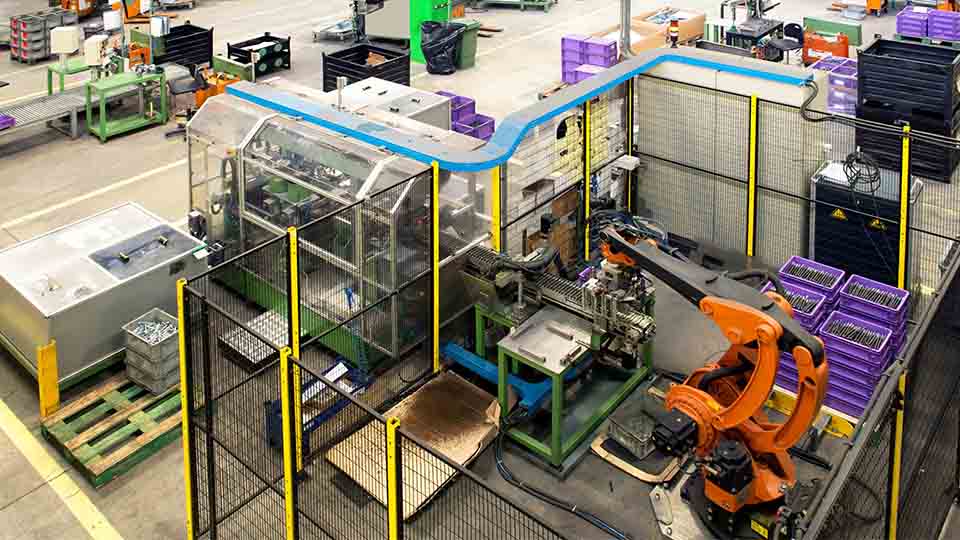
Overview of Downtime in Manufacturing:
Downtime refers to any period when the manufacturing process stops or pauses, which leads to a temporary stoppage of output.
A downtime event can happen for a variety of reasons, ranging from machinery breakdowns, maintenance activities, supply chain issues, labor shortages, or even software failures.
Planned vs. Unplanned Downtime: What is the difference?
Not all downtime events are bad. Let’s talk about the two different types of downtime in manufacturing: unplanned vs. unplanned downtime.
Planned Downtime:
This refers to any pre-scheduled stoppage of manufacturing processes. Companies intentionally schedule downtime to perform necessary maintenance, updates, or system checks to ensure that equipment runs efficiently and safely. It includes activities like:
- Preventive maintenance
- Equipment upgrades
- Software updates
- Training sessions for staff
Unplanned Downtime:
This is when production unexpectedly halts because of unforeseen issues, such as equipment failures, power outages, supply chain disruptions, or other emergencies. Unlike planned downtime, which is scheduled and accounted for in operational planning, unplanned downtime comes without warning and can significantly disrupt production processes.
Unfortunately, this often leads to immediate productivity losses, can incur substantial repair costs, and often has a ripple effect, delaying order fulfillment, straining customer relationships, and potentially damaging a company’s reputation.
Why Does Downtime Happen?
Businesses may schedule downtime for maintenance and staff training, and this is purposeful. The issue at hand is unplanned downtime. Here is why unplanned downtime occurs:
- Equipment Failure: This is the most common mishap. Machinery can break down due to old age or lack of maintenance.
- Human Error: Mistakes made by staff, such as using machinery incorrectly, mishandling materials, or failing to follow protocols.
- Supply Chain Issues: Any disruptions in the supply chain such as delays in getting raw materials or parts, can halt production lines.
- Power Outages: Power outages can be common and disrupt production, causing long-term damage to operations.
- Software Failures: Software issues, failures, or cyber-attacks are rare but possible and can be detrimental.
How Much is Unplanned Downtime Costing You?
The cost of unplanned downtime varies on the industry and scale of the business. Studies show that the cost of unplanned downtime for manufacturing businesses can be from thousands to millions of dollars per hour. For example, in the automotive industry, every minute of downtime typically generates $10,000 of profit for the automobile manufacturer, which over an hour could equate to easily over $500,000 per hour of lost profits.
A cost that has to be factored in, other than direct operational costs, are long term customer relationships and customer satisfaction.

Top 5 Tips for Reducing Downtime:
Finding ways to reduce unplanned downtime can help you protect your production flow and, ultimately, your bottom line. Below, I list some of the best downtime reduction strategies many manufacturing companies follow:
1. Track it, then study it:
The first main step in reducing unplanned downtime is to try and understand when, why, and how often it occurs. Keeping a detailed log or record of each “incident” will help you in identifying patterns or recurring issues. If you can, then use your downtime tracking data to analyze and help find the root causes of downtime and determine whether they’re related to specific equipment, processes, or times of day. Your data collection can help you develop targeted strategies to prevent future downtime events.
When tracking your downtime, here are some key metrics to look for:
- Total Downtime: The total amount of stopped time while production was down.
- Frequency of Events: How often downtime occurs, indicating how volatile the current operations are.
- Cause of Downtime: Start to classify the downtime by reasons, such as equipment failure, power outages, or human errors.
- Specific Machine or Line: Identify which specific machines or production lines that are often failing.
- Mean Time To Repair (MTTR): Start tracking the average time it took to fix or repair a failure and then resume operations.
- Mean Time Between Failures (MTBF): This measures the average operational or uptime between breakdowns, which can help identify equipment reliability.
- Percentage of Downtime: You should know the percentage of downtime for each piece of equipment and for the whole operation, which in turn will give you your uptime percentage.
- Impact on Production: It is important to know the downtime impact on production, so tracking the number of units not produced can put things in a more manageable light once better practices are put in place.
- Cost: Calculating the cost impact may be the most important factor that could include direct and indirect costs associated with these downtime events.
2. Create a preventive maintenance plan:
I can’t overstate this one enough. It is absolutely critical to create, schedule, and maintain a preventative maintenance plan if you want to prevent unexpected downtime. You want to make sure that you maximize overall equipment effectiveness. At the same time, the goal is to keep your equipment as safe and reliable as possible.
Develop and stick to the preventive maintenance schedule for all machinery and equipment. This includes:
- Daily, weekly, and monthly inspections
- Cleaning and lubrication
- Parts replaced before the recommended due date
- Document and record what was done
Routine preventative maintenance will cause some planned downtime, but it will be far less disruptive and costly than unexpected equipment downtime or failures.
3. Automate wherever you can:
Human error is one of the main causes of downtime, so if you can automate a process, this will help reduce the risk of machine downtime.
Many companies today are also adding industrial automation into their production lines to address manufacturing labor shortages1 in the United States. Automated systems are more repeatable and efficient, and can operate 24/7. Now, many automated solutions come with predictive maintenance capabilities that will alert you of potential equipment issues before they occur.
4. Train your employees…regularly:
Well-trained employees are way ess likely to make mistakes that cause downtime. Regular training sessions should cover the proper operation of machinery and equipment, as well as troubleshooting and emergency response. Equipping your manufacturing staff with the knowledge and skills they need to prevent downtime is a must-have investment. More importantly, it’s a great way to keep your employees safe.
5. Try for continuous improvement:
A well-optimized production line is less likely to experience unplanned downtime. Depending on the production process, optimizing strategies can vary:
- Adopt lean manufacturing techniques to minimize waste without sacrificing productivity
- Invest in advanced technologies such as IoT (Internet of Things), AI (Artificial Intelligence), and robotics
- Implement rigorous quality control measures at every stage of production
- Hire a top-notch maintenance team to effectively reduce downtime caused by machinery failure
- Review and adjust the layout of your manufacturing floor and workflow processes to eliminate bottlenecks
- Implement systems that allow you to quickly adapt to changes in demand or product specifications
How to calculate production downtime?
Make sure to calculate the sum of all stoppages. This includes planned downtime, like scheduled maintenance, part changeovers, breaks, and unplanned downtime, like machine breakdowns or waiting on parts.
Downtime = (Sum Of All Stoppages / Planned Production Time) x 100%
So if you are scheduled to make 100 parts per hour over a 40-hour work week, and you had 5 hours of stoppages throughout the week. This means you lost 500 parts due to downtime issues that week.
The downtime calculation would be:
(5hrs/40hrs) x 100% = 12.5% of downtime occurred that week.
In industrial automation, the standard downtime is around 10%, so this is a good target to try to reach if you are calculating downtime for the first time.
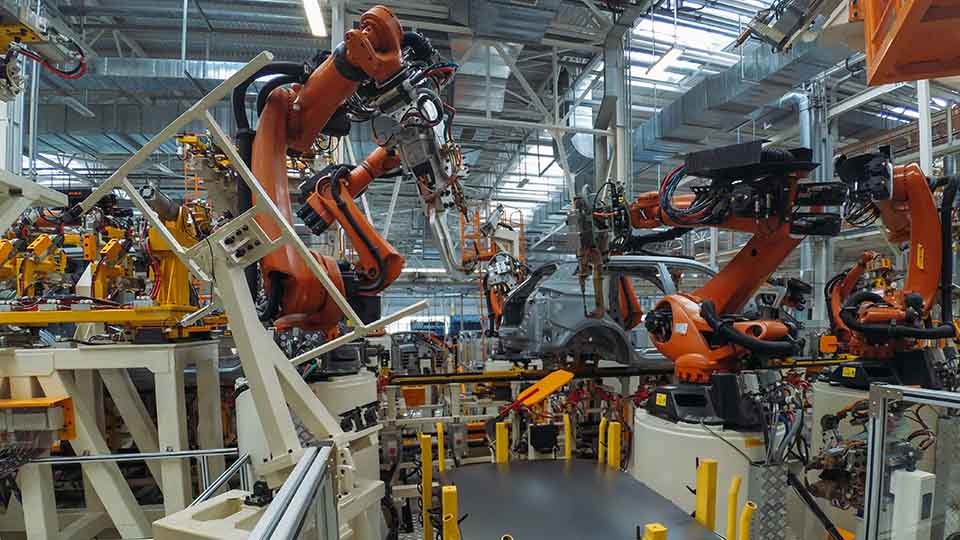
What About Planned Downtime?
While planned downtime is necessary for maintenance, upgrades, and other essential activities, you need to manage it well to minimize its impact on production schedules and overall operational efficiency. Below, I list some tips for managing planned downtime effectively:
1. Schedule:
Plan for downtime during non-peak production hours or when it will have the least impact on production or customer delivery schedules. Using times when production demand is lower or nonexistent will help minimize this effect on operations. This can be done during lunch breaks, off-shifts, or even on weekends to reduce the effects on the main production lines.
2. Communicate:
Make sure all team members, including operations, maintenance, engineering, and management are all well aware of the scheduled downtime. Clear communication will help manage expectations and allow for better planning for all parties.
3. Prepare:
Before downtime begins, start preparing all of the necessary tools, parts, equipment, and personnel to be ready and available to work when scheduled. Preparations should include a detailed plan of the tasks that are to be performed, the necessary safety procedures to follow, and any training that might be required for personnel.
4. Maximize:
Use the opportunity not just for maintenance, but also for any possible upgrades, deep cleaning, repairs, or other tasks that are easier to do when the production line is not in operation. This can help reduce the need for future downtime.
5. Testing:
After maintenance, replacements, or upgrades, thoroughly test systems and automation equipment before resuming full production.
Connect with the best engineering contractors in the country:

Every manufacturing company needs reliable engineering to maximize their manufacturing process and reduce downtime as much as possible. However, not everyone can afford a team of engineers on staff. This is where JOINER Services comes in, an engineering service company where you can connect with skilled and highly-vetted engineering contractors across the country. From weld engineering services to controls engineering services, JOINER has the right professional for you.

Join for free and start searching for projects or engineer profiles today!
FREQUENTLY ASKED QUESTIONS:
Below, I list some interesting FAQ’s about how to reduce downtime in manufacturing.


